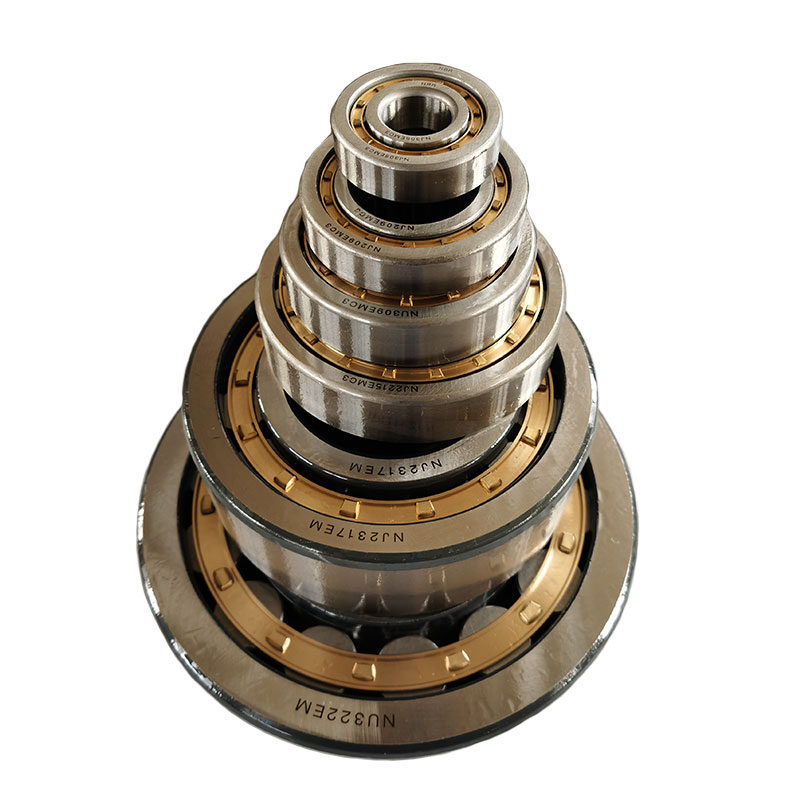- Automobiles & Motorcycles
- Beauty & Personal Care
- Business Services
- Chemicals
- Construction & Real Estate
- Consumer Electronics
- Electrical Equipment & Supplies
- Electronic Components & Supplies
- Energy
- Environment
- Excess Inventory
- Fashion Accessories
- Food & Beverage
- Furniture
- Gifts & Crafts
- Hardware
- Health & Medical
- Home & Garden
- Home Appliances
- Lights & Lighting
- Luggage, Bags & Cases
- Machinery
- Measurement & Analysis Instruments
- Mechanical Parts & Fabrication Services
- Minerals & Metallurgy
- Office & School Supplies
- Packaging & Printing
- Rubber & Plastics
- Security & Protection
- Service Equipment
- Shoes & Accessories
- Sports & Entertainment
- Telecommunications
- Textiles & Leather Products
- Timepieces, Jewelry, Eyewear
- Tools
- Toys & Hobbies
- Transportation
What are the Types of Roller Bearings?
Roller bearings are a fundamental component in various mechanical systems, playing a crucial role in supporting and facilitating smooth motion. These innovative devices have revolutionized industries by minimizing friction and enabling efficient movement across a range of applications. In this article, we will delve into the world of roller bearings, exploring their types, benefits, and applications, all of which contribute to their significance in modern engineering.

At their core, roller bearings are cylindrical-shaped components designed to reduce friction between moving parts. They achieve this by replacing sliding friction with rolling friction. This mechanism not only reduces wear and tear on components but also enhances the overall efficiency and longevity of mechanical systems.
Types of Roller Bearings
Cylindrical Roller Bearings: These bearings have high radial load capacity and are suitable for applications where heavy loads and shock loads are prevalent, such as in automotive transmissions and industrial machinery.
Tapered Roller Bearings: Ideal for supporting combined axial and radial loads, these bearings are commonly used in wheel hubs, gearboxes, and construction equipment.
Spherical Roller Bearings: Engineered to accommodate misalignment and heavy radial loads, spherical roller bearings find applications in paper mills, conveyor equipment, and mining machinery.
Needle Roller Bearings: With a slender design, these bearings are used in applications with limited radial space, such as in automotive and aerospace industries.
Thrust Roller Bearings: Designed to handle axial loads, thrust roller bearings are crucial in automotive transmissions, marine applications, and material handling systems.
Benefits of Roller Bearings
Reduced Friction: Roller bearings significantly decrease friction compared to plain bearings, leading to energy savings and lower heat generation.
Enhanced Durability: The rolling motion reduces wear, extending the lifespan of components and reducing maintenance requirements.
High Load Capacity: Roller bearings can handle heavy loads while maintaining their performance, making them suitable for various industrial applications.
Precise Motion Control: These bearings offer precise control over motion, crucial in applications requiring accurate positioning and alignment.
Versatility: With various types available, roller bearings can be tailored to suit specific application requirements.
Applications in Diverse Industries
Automotive: Roller bearings are found in wheel hubs, transmissions, engines, and steering systems, enhancing the performance and safety of vehicles.
Industrial Machinery: Industries like manufacturing, construction, and mining rely on roller bearings for conveyor systems, heavy machinery, and processing equipment.
Aerospace: Bearings are vital in aircraft components, ensuring reliable performance and safety during flight.
Energy Generation: Wind turbines and power plants utilize roller bearings in generators, turbines, and other critical components.
Medical Equipment: Precision and reliability of roller bearings make them valuable in medical devices like CT scanners and surgical equipment.
Conclusion
Roller bearings have transformed the way mechanical systems operate, providing efficiency, durability, and performance improvements across industries. By understanding the types, benefits, and maintenance practices associated with roller bearings, engineers and technicians can harness their full potential and continue pushing the boundaries of innovation in the field of mechanical engineering.
If you are interested in sending in a Guest Blogger Submission,welcome to write for us!




Comments
0